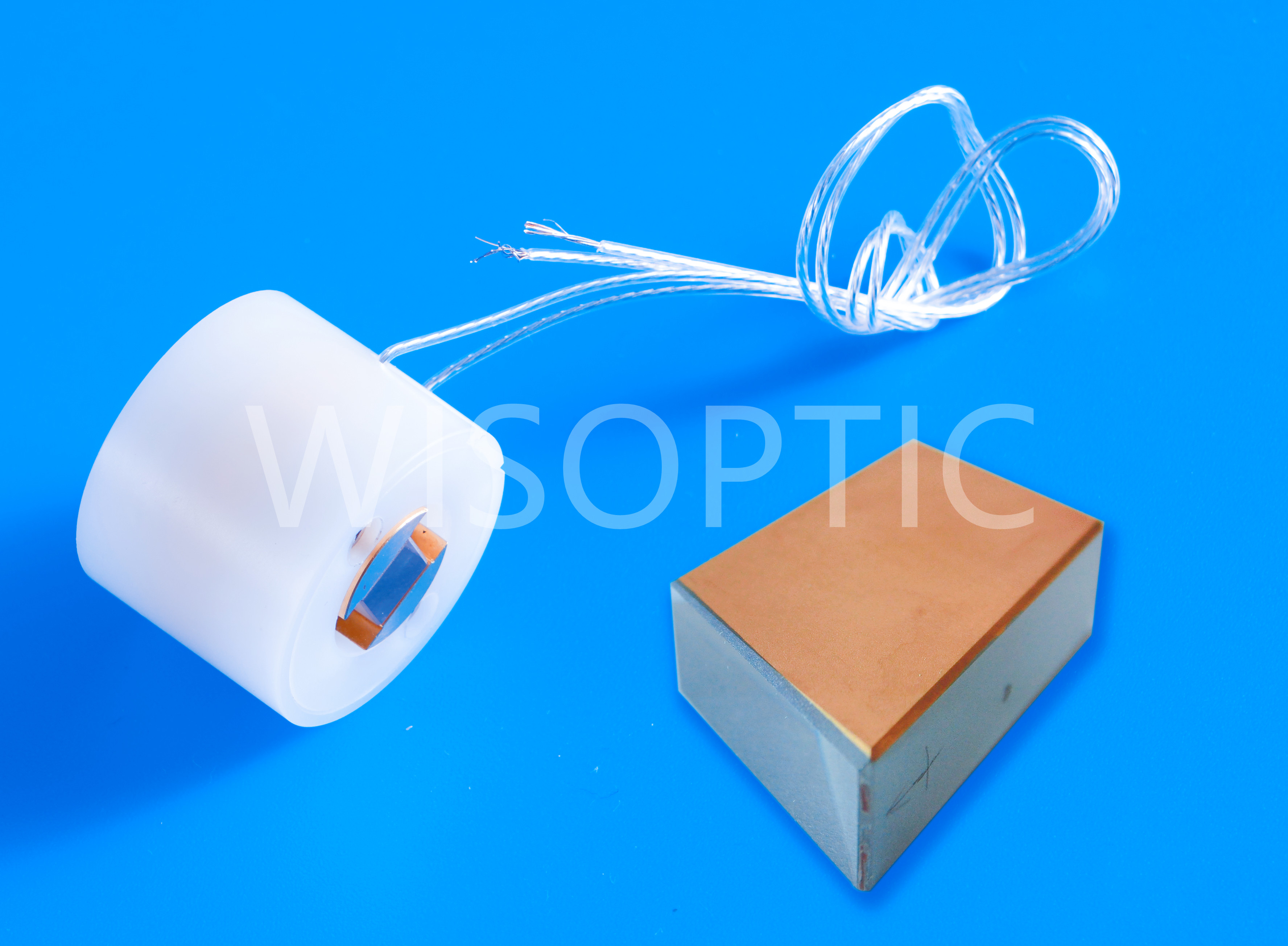Lithium niobate (LiNbO3, abbreviated as LN) is a multi-functional and multi-purpose artificial crystal which integrates excellent electro-optic, acousto-optic, elastic-optic, piezoelectric, pyroelectric, photorefractive effect and other physical properties. LN crystal belongs to the trigonal crystal system, with ferroelectric phase at room temperature, 3m point group, and R3c space group. In 1949, Matthias and Remeika synthesized LN single crystal, and in 1965 Ballman successfully grew a larger size LN crystal.
In 1970s LN crystals began to be used in the preparation of electro-optic Q-switches. LN crystals have the advantages of no deliquescent, low half-wave voltage, lateral modulation, easy to make electrodes, convenient use and maintenance, etc., but they are prone to photorefractive changes and have low laser damage thresholds. At the same time, the difficulty of preparing high optical quality crystals leads to uneven crystal quality. For a long time, LN crystals have only been used in some low or medium power 1064 nm laser systems.
In order to solve the problem of photorefractive effect, a lot of works have been carried out. Because the commonly used LN crystal is developed by eutectic ratio of same composition of solid-liquid state, there are defects such as lithium vacancies and anti-niobium in the crystal. It is easy to adjust the crystal properties by changing the composition and doping. In 1980, it’s found that doping LN crystals with a magnesium content of more than 4.6 mol% increases the photo-damage resistance by more than one order of magnitude. Other anti-photorefractive doped LN crystals have also been developed, such as zinc-doped, scandium-doped, indium-doped, hafnium-doped, zirconium-doped, etc. Because doped LN has poor optical quality, and the relationship between photorefraction and laser damage is lack of research, it has not been widely used.
To solve the problems existing in the growth of large-diameter, high-optical-quality LN crystals, researchers developed a computer control system in 2004, which better solved the problem of serious lag in control during the growth of large-size LN. The level of equal diameter control has been greatly improved, which overcomes the sudden change in diameter caused by poor control of the crystal growth process, and greatly improves the optical uniformity of the crystal. The optical uniformity of the 3 inch LN crystal is better than 3×10−5 cm−1.
In 2010, researchers proposed that the stress in the LN crystal is the main reason for the poor temperature stability of the LN electro-optical Q-switch. On the basis of the computer-controled equal diameter technology to grow high optical quality LN crystal, a special heat treatment process is used to reduce the residual of the blank. In 2013, someone proposed that, as the internal stress, the external clamping stress has same effect on the temperature stability of the electro-optic Q-switching application of the LN crystal. They developed an elastic assembly technology to overcome the external stress problem caused by the traditional rigid clamping, and this technique has been promoted and applied in the 1064 nm series of lasers.
At the same time, because the LN crystal has wide light transmission band and large effective electro-optic coefficient, it can be used in mid-infrared waveband laser systems, such as 2 μm and 2.28 μm.
For a long time, although a lot of works have been carried out on LN crystals, there is still lack of systematic research on LN’s infrared photorefractive properties, the intrinsic laser damage threshold, and the influence mechanism of doping on the damage threshold. The application of electro-optical Q-switching of LN crystal has brought a lot of confusion. At the same time, the composition of LN crystals is complex, and the types and quantities of defects are abundant, resulting in difference produced by different furnaces, different batches, and even different parts of the same piece of crystal. There may be large differences in the quality of crystals. It is difficult to control the performance consistency of electro-optic Q-switched devices, which also restricts the application of electro-optic Q-switching of LN crystals to a certain extent.
High quality LN Pockels cell made by WISOPTIC
Post time: Sep-27-2021

